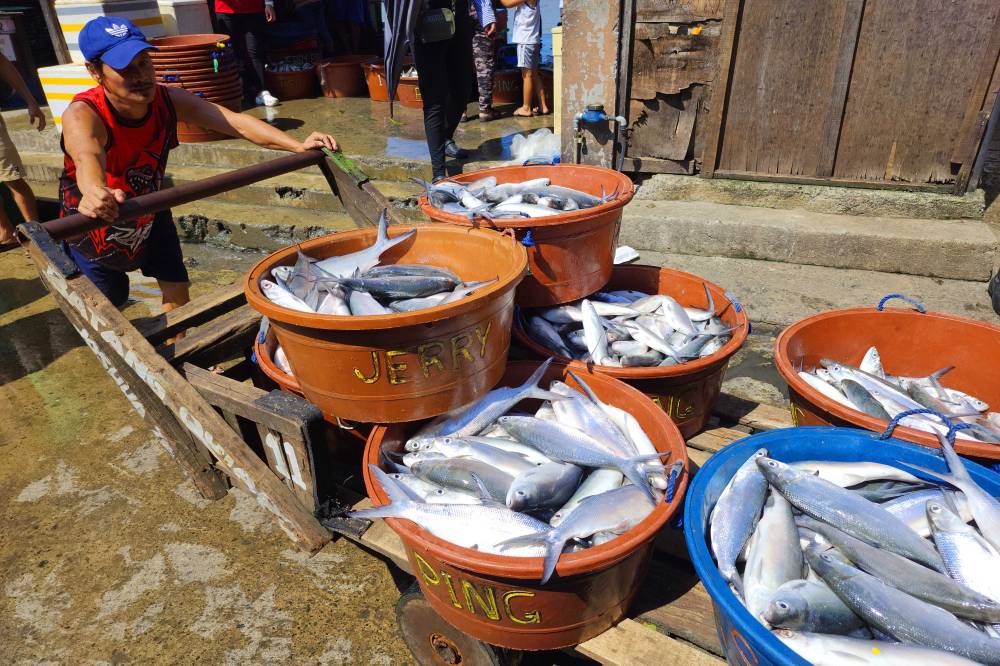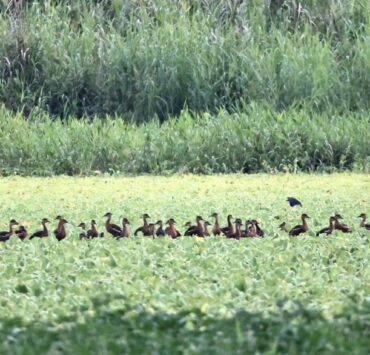Pangasinan fishers ‘back to zero’ after ‘Uwan’

DAGUPAN CITY—The impact of Supertyphoon “Uwan” (international name: Fung-wong), which generated meter-high storm surges, and high tide-induced floods submerged fish farms across central Pangasinan towns and this city, causing thousands of “bangus” (milkfish) and other cultured fish to escape from ponds.
A fishpond operator from Binmaley town said water began rising around 9 p.m. on Nov. 8 and continued to increase rapidly. By 1 a.m. to 2 a.m. the next day, almost all the fishponds were underwater.
Marcos Lopez, a fishpond operator from Barangay Balagan in this city, said that unlike previous storms when water levels rose gradually, Uwan’s surge gave them no time to react.

Washed out
“During Uwan, the water rose so fast,” he told the Inquirer, adding that while some operators had installed nets around their ponds, these were toppled by the typhoon’s powerful winds.
In Dagupan City, fish pen operator Peter Pinlac said the sudden rise in water caught residents off guard.
“This was the first time that we experienced a storm surge. Everything was crushed. The pens were washed out and our bangus stock escaped to the river. The boats we used to transport fish to the market were all destroyed,” Pinlac shared in a separate interview.
He added that not only was their fishpens destroyed, but even the fruit trees in their backyard were lost as seawater overtopped the seawall along their community of Sabangan in Barangay Bonuan Gueset here.
“We are back to zero. This is the worst catastrophe that happened to us,” Pinlac lamented.
Another operator, who asked not to be named in this story, said this was the second time this year that local fish farms had been inundated—“but this flooding was far worse,” he said, as the water breached dikes and nets.
The milkfish growers’ association Samahan ng Magbabangus sa Pangasinan (Samapa) said Dagupan City’s bangus industry was the worst hit by Uwan although it has yet to provide an estimate of the losses suffered by operators.
By Sunday morning, markets and roads in Dagupan and Binmaley were flooded with bangus selling for P50 to P70 a kilo, depending on their sizes—down from P150 to P170 the day before the typhoon struck, when some farmers conducted emergency harvests.
“The bangus were caught by local fishermen using ‘lambat’ (nets). They can sell at lower prices because they didn’t spend on production costs. Also, with the power outage, they can’t store the fish,” Lopez explained.
Hopeful
Fishpond operators remained hopeful that at least half of their stocks survived.
“But we won’t know until we harvest and drain the ponds,” Lopez said.
Fish cages in western Pangasinan, however, were reportedly spared from damage, ensuring an adequate fish supply for the province.
“We may be down now, but definitely we’re not out—we’ll rise again,” said another operator from Dagupan.
In nearby Sto. Tomas town in La Union province, Rochelle Corpuz said the snapper, “lapu-lapu” (grouper) and “malaga” (rabbitfish) that she and her husband were set to harvest in December were all lost when their stock escaped from the cage.
“We lost our livelihood, but we thank the Lord that we’re alive,” Corpuz said.
Samapa has started coordinating with the Bureau of Fisheries and Aquatic Resources, the Department of Social Welfare and Development, and other government agencies to assist affected fish farmers, particularly small-scale growers, in recovering from their losses.

















